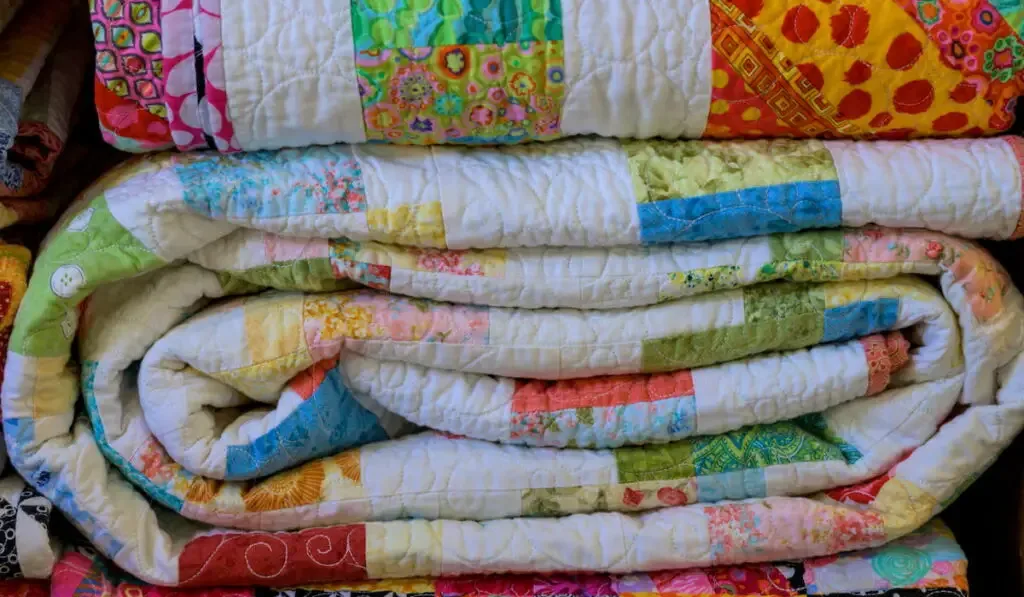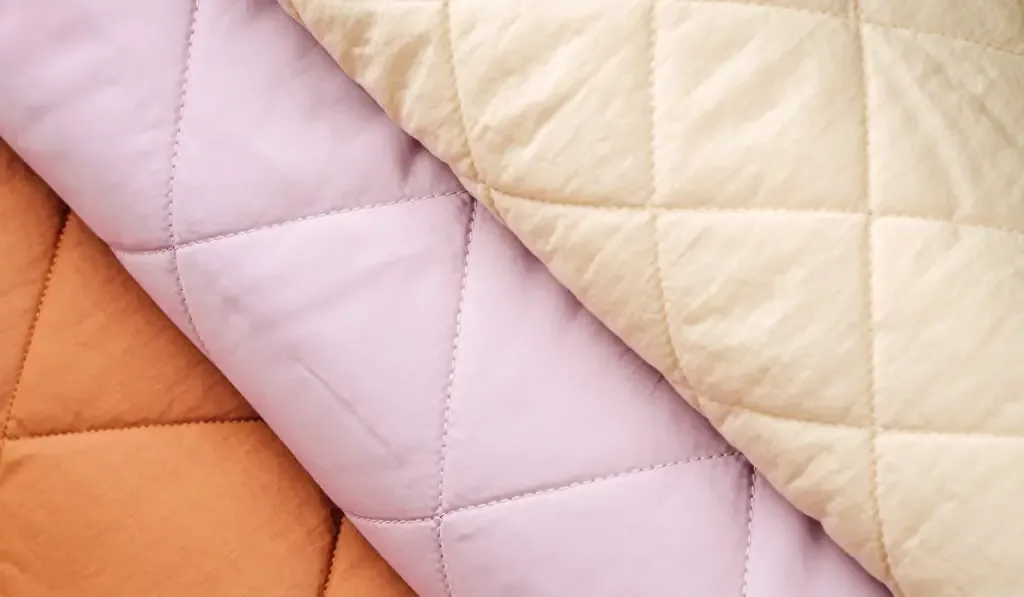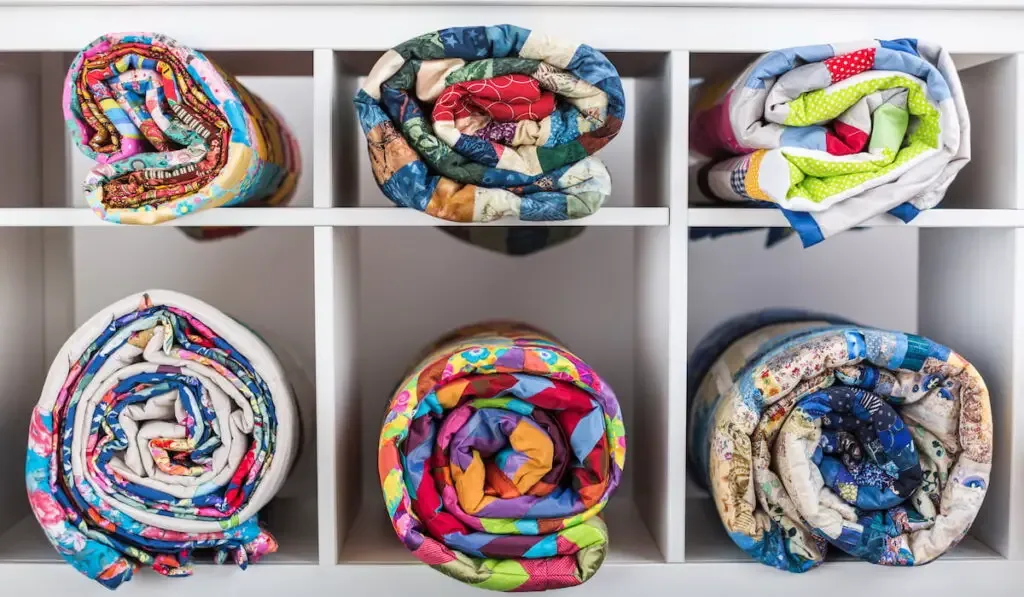Not correctly folding quilts before storing them will leave you with creases that will not be easy to get rid of. So, before you go on and fold your quilt like you would fold any other tailored item, stop! Read this article first.
In this article, we explain how to fold quilts for storage. We offer DIY tips on quilt folding and quilt storage. So, when done reading, you should be more assured in your efforts to store your quilts.
How Should I Fold a Quilt?
You should fold a quilt on the bias. The bias of a quilt is a diagonal line of woven fabric between cross grains and straight grains. The bias is much more elastic than the cross and straight grains, making it less likely to form a permanent crease when folded.
You can fold quilts on straight grains for short periods. However, permanent creases will form if you do so for extended storage periods. Unfortunately, permanent creases weaken your fabric and its batting. This may lead to holes and tears.
So, if you fold on the bias, you will protect its structural integrity and lengthen its lifespan.

How to Fold Quilts for Storage
To fold your quilts for storage, follow these step-by-step instructions:
Step 1:
Lay your quilt on a large, flat surface with the bottom side up.
Step 2:
Start by folding on the bias. Pick one of the bottom corners of the laid quilt. Then fold it over the quilt by pulling it towards the upper edge of the quilt. If the quilt is a square, the bottom corner should meet the upper corner facing it diagonally, forming a triangle. However, if the quilt is a rectangle, the bottom corner will meet the upper edge of the quilt close to the upper corner at the diagonal.
This will form a triangle and a smaller rectangle.
Step 3:
Next, fold one of the unfolded corners onto the already folded part of the quilt.
Step 4:
Take another one of the unfolded corners of the quilt and fold towards the center.
Step 5:
Repeat step 4 with the one remaining unfolded corner.
Step 6:
Fold the quilt into itself, halving its size, and that is it. The quilt is ready for storage. If the folded quilt is still too large for storage, you may fold it into itself until you get the desired size.

Another Way to Fold Quilts for Storage
Besides the method described above, you can fold quilts for storage following these directions:
Step 1:
Lay your quilt on a large, flat surface with the right side up.
Step 2:
Pick the right edge of the quilt and fold it over the quilt by pulling it towards the center.
Step 3:
Repeat step 2 with the left edge of the quilt. When you fold the right and left edges of the quilt towards the center, you should form a rectangle.
Step 4:
Next, pick the bottom edge of the quilt and fold it towards the center.
Step 5:
Repeat step 4 with the upper edge of the quilt.
Step 6:
Fold the quilt into itself, halving its size, and that is it. The quilt is ready for storage. If the folded quilt is still too large for storage, you may fold it into itself until you get the desired size.
The method described above folds quilts in thirds, and it is okay for short-term storage.

Tips for Storing Quilts
- Do not store your quilt in places with elevated humidity and temperature. You leave the quilt prone to damage by mold and mildew if you do. In other words, areas like attics and basements are not ideal for quilt storage.
- If you can, store your quilt flat – you may do this by laying the quilt on your bed. Doing this promotes breathability. However, use the bias folding method and store the quilt elsewhere if you cannot leave it out flat.
- Avoid storing your quilt in airtight plastic containers for prolonged periods. Blocking out air from quilts when you store them can damage the fabric. Besides, plastic containers may trap moisture, which may damage your quilt.
- If you have one, you can fold your quilt around a pool noodle before storage. This way, you don’t have to worry about permanent creases. However, you may only fold quilts with pool noodles if you have the storage space for quilts folded this way.
- If you fold quilts along the straight grains, you can prevent the formation of permanent creases by refolding them regularly. Obviously, this is more tedious than doing bias folding once and for all.
- Avoid stacking too many folded quilts on each other. The weight of the quilts on each other may promote crease formation.
- Store your quilt away from sunlight. Leaving quilts in a place that exposes them to direct sunlight will cause the exposed fabric to fade and lose color.
- Regularly using your quilts and airing them out keeps them in top condition for longer.
- You can provide some protection for your stack of folded quilts by covering them with clean white sheets.
